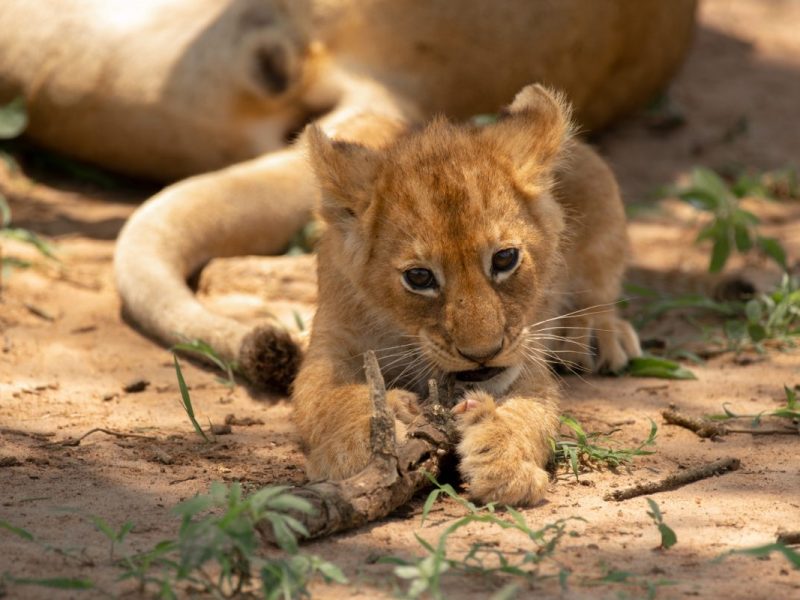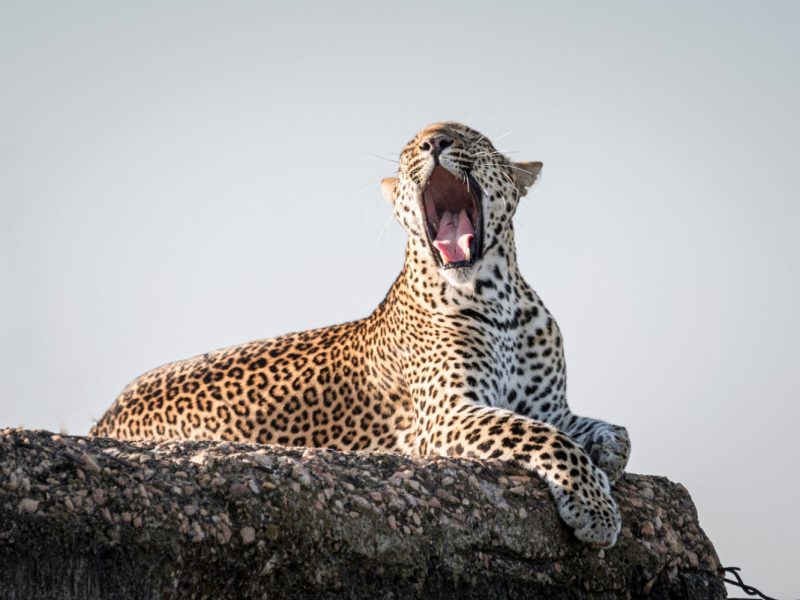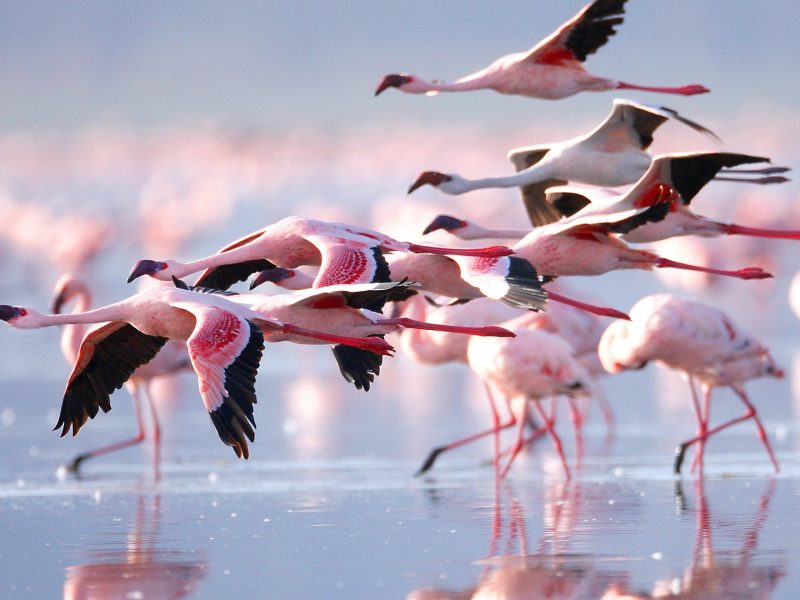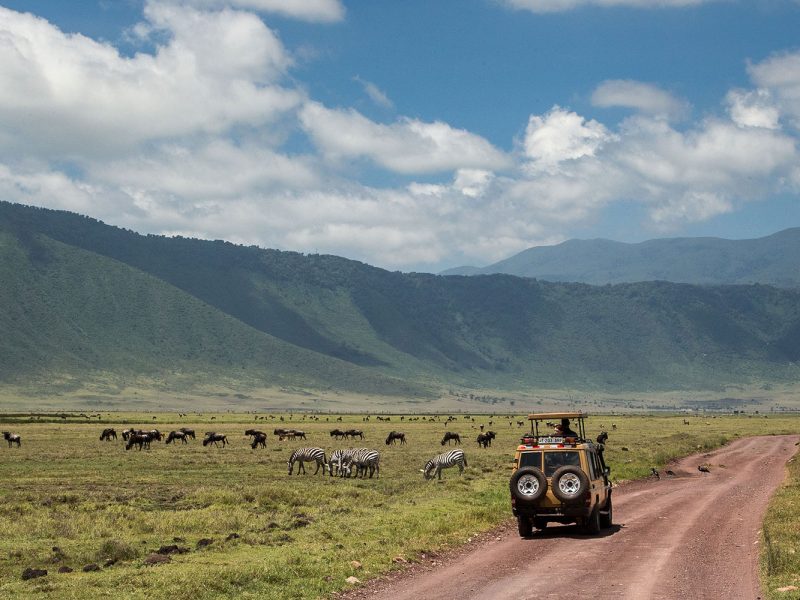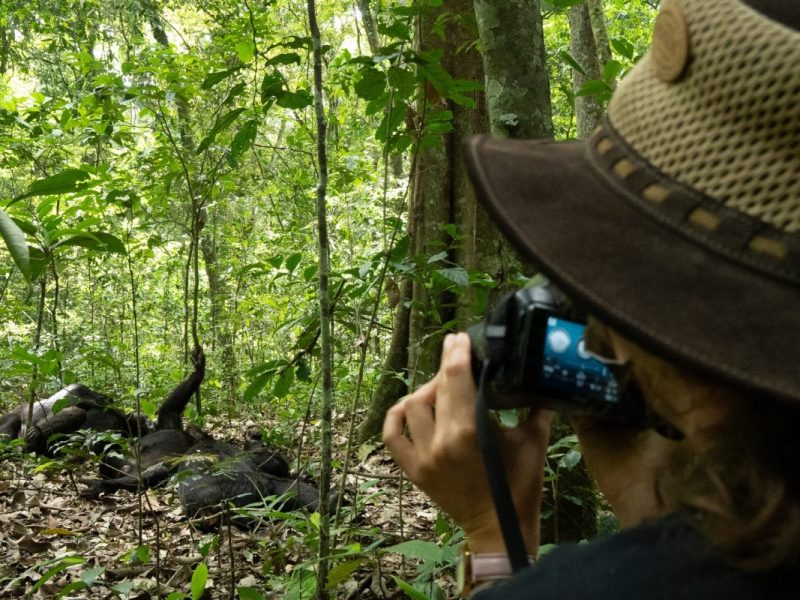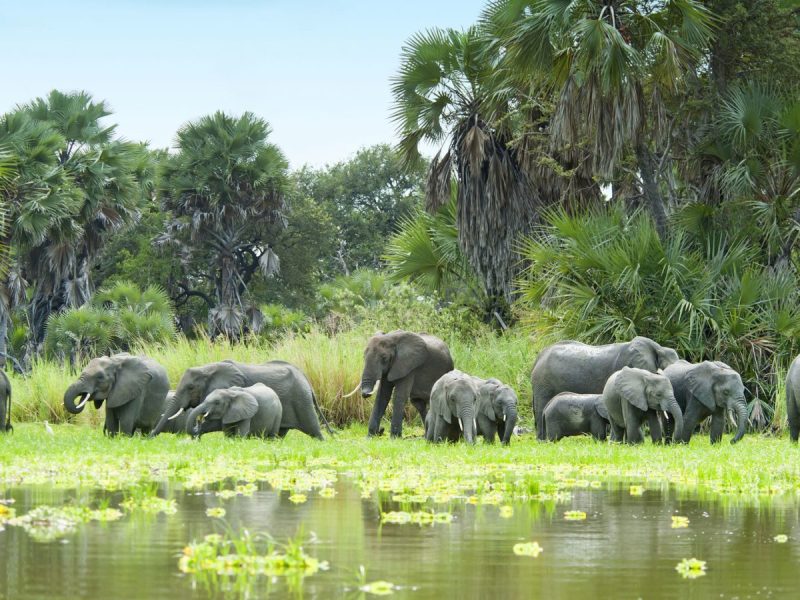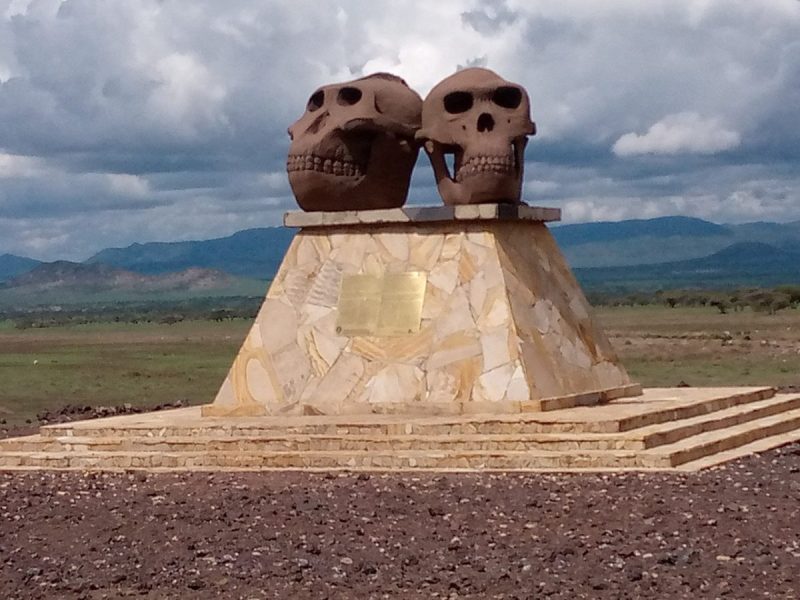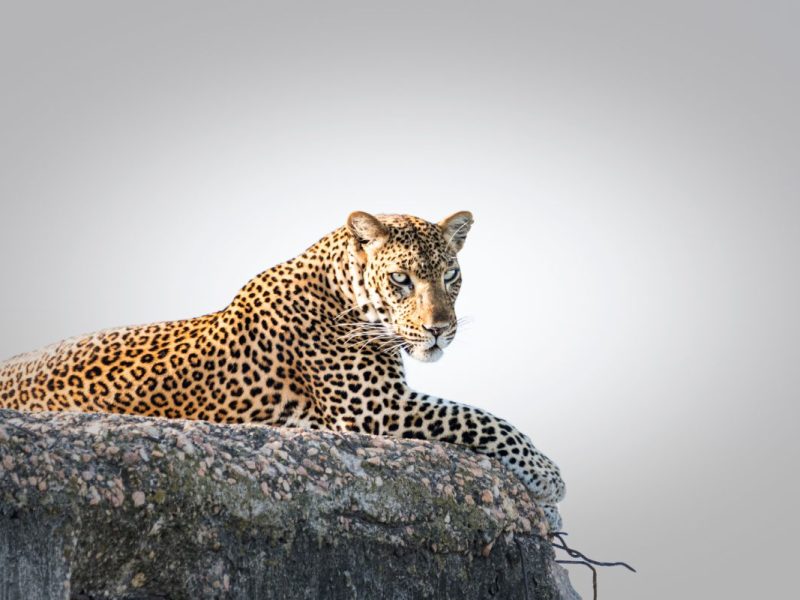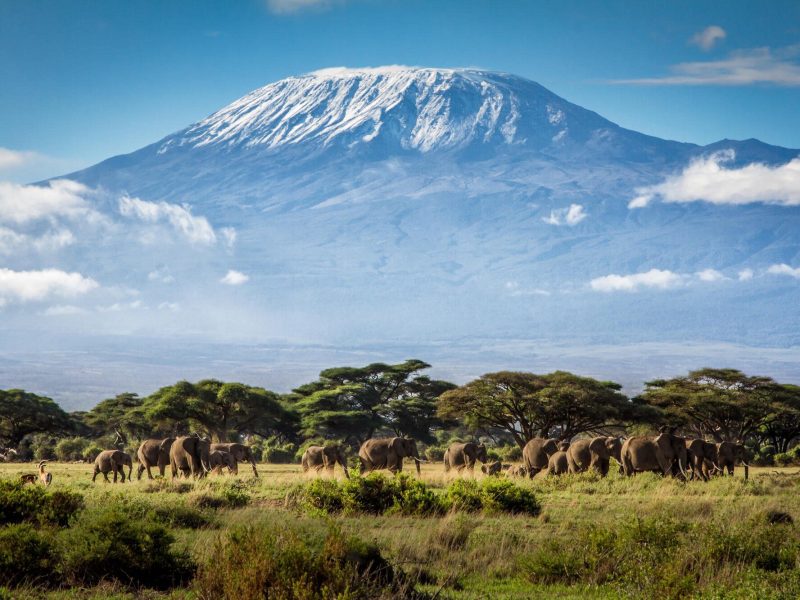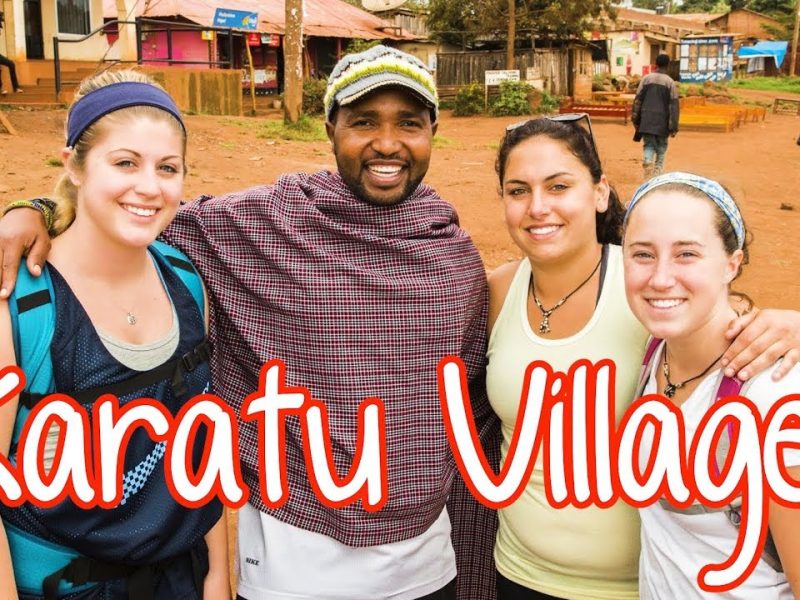Tanzania Safari Destinations (Tanzania National Parks) Best Places to Visit in Tanzania
Tanzania Safari Destinations (Tanzania National Parks) Best Places to Visit in Tanzania. It is a country in East Africa renowned for its stunning landscapes, diverse wildlife, and rich cultural heritage. It offers some of the best safari destinations in the world. Famous for the annual Great Migration of wildebeest and other herbivores. Abundant wildlife, including the Big Five (lion, leopard, elephant, buffalo, and rhinoceros). Open savannahs and diverse ecosystems.
More About Tanzania National Parks
Home to the Ngorongoro Crater, a large volcanic caldera with a high concentration of wildlife. Excellent chance to see the Big Five in a relatively small area. Unique landscapes and the opportunity to interact with the Maasai people.
This country – Tanzania offers a range of safari experiences, from the iconic Serengeti to lesser-known gems like Katavi and Selous. Tanzania commitment to wildlife conservation and its diverse ecosystems make it one of the top destinations for safari enthusiasts.
Ultimate Africa Safari to Serengeti
Best Places to Visit in Tanzania Safari Destinations with Deks Tours
Serengeti National Park
Serengeti National Park is a renowned wildlife reserve located in the northern part of Tanzania, East Africa. It is one of the most famous and oldest national parks.
Tarangire National Park
The Tarangire National Park Portal is a non-profit organization that contains all information from wildlife, attractions, Tarangire activities, and safari accommodations.
Lake Manyara National Park
Lake Manyara National Park is a protected area located in northern Tanzania. It is situated at the base of the Rift Valley escarpment and is known for its diverse.
Ngorongoro Crater Area
The Ngorongoro Crater Conservation Area is a UNESCO World Heritage Site located in northern Tanzania. It is named after the Ngorongoro Crater, which is the world’s.
Mahale Mountains Park
Mahale Mountains National Park is a protected area located in the western part of Tanzania, East Africa. The park is known for its stunning landscapes, diverse.
Selous National Reserve
The Selous National Reserve is the largest protected animal reserve on the African continent, covering an area of 54,600 square kilometers and encompassing.
Olduvai Gorge Tanzania
Olduvai Gorge, located in the eastern Serengeti Plains in northern Tanzania, is one of the most important paleoanthropological sites in the world. The gorge is often…
Arusha National Park
Arusha National Park is a protected area located in northern Tanzania, near the town of Arusha. Established in 1960, it covers an area of approximately 552 square.
Mount Kilimanjaro National Park
Mount Kilimanjaro National Park is a protected area surrounding Mount Kilimanjaro, the tallest mountain in Africa. The park is located in Tanzania and was established in 1977.
Karatu Village Tanzania
Karatu is a town located in the Arusha Region of northern Tanzania. It is situated near the Ngorongoro Conservation Area, which is a UNESCO World Heritage Site and a popular tourist.
What to Adventure in Tanzania Safari Destinations?
Tanzania offers a wide range of adventurous activities within its safari destinations, providing visitors with a chance to explore the diverse landscapes and encounter unique wildlife. Venture into the heart of national parks such as the Serengeti, Ngorongoro Crater, and Tarangire for thrilling game drives. Witness the Great Migration in the Serengeti, where massive herds of wildebeest and other animals move in search of fresh grazing.
The 11 Best Things to Do on Tanzania Safari
- Hot Air Balloon Safaris
- Walking Safaris
- Chimpanzee Trekking
- Boat Safaris
- Cultural Interaction
- Bird Watching
- Camping Safaris
- Photographic Safaris
- Hiking and Trekking
- Diving and Snorkeling
- Balancing Rock Excursion
Visit Karatu Village, Tanzania Travel
Which safari park is best in Tanzania Destinations?
Determining the “best” safari park in Tanzania depends on your preferences, interests, and the type of wildlife and landscapes you want to experience. Each park has its own unique characteristics.
Serengeti National Park: Famous for the Great Migration, one of the most spectacular wildlife events on the planet. Abundance of wildlife, including the Big Five (lion, leopard, elephant, buffalo, and rhinoceros).
Ngorongoro Crater Conservation Area: Home to the Ngorongoro Crater, a UNESCO World Heritage Site and a natural enclosure for a variety of wildlife.
Tarangire National Park: Known for its large elephant herds and iconic baobab trees. Varied landscapes, including riverine forests, swamps, and savannah.
Lake Manyara National Park: Known for its tree-climbing lions and diverse ecosystems. Scenic landscapes surrounding the alkaline Lake Manyara.Rich birdlife, including flamingos and pelicans.
Ultimately, the “best” safari park for you depends on your preferences for wildlife viewing, landscapes, and the overall safari experience you desire. Many visitors choose to combine multiple parks to enjoy a diverse range of ecosystems and wildlife encounters during their Tanzania safari.
What is the best safari route in Tanzania Destinations?
The best safari route in Tanzania depends on your preferences, the time of year, and the specific experiences you’re seeking. However, one popular and classic safari route in Tanzania is often referred to as the “Northern Circuit,” which includes several iconic national parks and conservation areas.
Start your journey in Arusha, a city located at the foothills of Mount Meru. Arusha is often the gateway to northern Tanzania safaris, and it’s a good place to acclimate before heading into the parks.
Begin your safari with a visit to Tarangire National Park, known for its large elephant herds, baobab trees, and diverse landscapes.
This classic Northern Circuit route provides a diverse range of ecosystems and incredible wildlife viewing opportunities. It’s important to note that the timing of your safari can impact your experience, especially if you want to witness the Great Migration in the Serengeti. The migration typically occurs from November to July, but exact timing can vary.
For a more off-the-beaten-path experience, you might also consider including other parks in the southern circuit, such as Selous Game Reserve and Ruaha National Park. Tailoring your route to match your interests and preferences will help ensure a memorable safari experience in Tanzania.
Where are the best Destinations to fly to Tanzania for safari?
When planning a safari in Tanzania, the choice of the destination to fly into will depend on the specific parks and regions you want to explore. The two main international airports that serve as gateways to Tanzania are Kilimanjaro International Airport (JRO) and Julius Nyerere International Airport (DAR).
Kilimanjaro International Airport (JRO)
- Proximity to Northern Circuit Parks: JRO is closer to the northern safari circuit, which includes iconic parks like Serengeti, Ngorongoro Crater, Tarangire, and Lake Manyara. If you’re primarily interested in these parks, flying into Kilimanjaro International Airport makes logistical sense.
- Mount Kilimanjaro: Kilimanjaro Airport is also near Mount Kilimanjaro, Africa’s highest peak. If you’re interested in combining your safari with a trek to Kilimanjaro, this airport is more convenient.
Julius Nyerere International Airport (DAR – Dar es Salaam)
- Southern and Western Circuit Parks: If you plan to explore parks in the southern and western circuits, such as Selous Game Reserve, Ruaha National Park, and Katavi National Park, flying into Julius Nyerere International Airport in Dar es Salaam may be more suitable.
- Zanzibar and Coastal Areas: DAR is also well-connected to the island of Zanzibar and other coastal destinations. If you’re considering a beach extension after your safari, flying into DAR can facilitate easy access to these areas.
In many cases, visitors choose to fly into one airport and then take domestic flights to reach their specific safari destination. Domestic flights within Tanzania are efficient and common, connecting major cities and airstrips near popular safari parks.
It’s essential to plan your itinerary and choose your entry point based on the specific parks you want to visit and the experiences you’re seeking. Deks Tours can help you organize seamless transfers and flights between different regions.
How much does a safari cost in Tanzania Destinations?
The cost of a safari in Tanzania can vary widely depending on various factors such as the duration of the safari, the level of accommodation, the specific parks visited, and the mode of transportation, the time of year, and the services included.
Budget Safari: Budget safaris can start from around $1,000 to $2,000 per person for a basic camping safari with budget accommodations. These safaris often involve group tours and may have simpler amenities.
Mid-Range Safari: Mid-range safaris, which include more comfortable accommodations and possibly private or semi-private tours, can range from $2,000 to $5,000 per person.
Luxury Safari: Luxury safaris, which offer high-end accommodations, personalized services, and often exclusive experiences, can start from $5,000 per person and can go well beyond $10,000 or more, depending on the level of luxury.
It’s important to note that these are general estimates, and actual prices can vary based on your preferences and Deks Tours. It’s recommended to get detailed quotes from Deks Tours, ensuring that you understand exactly what is included in the package. Additionally, be cautious of unusually low prices, as they may indicate a compromise in the quality of services or accommodations.
What is the best time to go on safari in Tanzania Destinations?
The best time to go on safari in Tanzania depends on your specific interests and the wildlife experiences you want to have. Tanzania experiences distinct seasons, and each season offers unique advantages for safari-goers.
Dry Season (June to October): The dry season is considered the best time for wildlife viewing as animals congregate around water sources, making them easier to spot. The vegetation is less dense, providing clearer views of wildlife. Excellent weather with sunny days and cooler temperatures.
Short Rainy Season (November to December): The landscapes are green and lush after the first rains. Fewer tourists compared to the dry season. Wildlife is still relatively easy to spot.
Long Rainy Season (March to May): The landscapes are at their most lush and green. Fewer tourists, resulting in a more secluded experience. Some lodges offer discounted rates.
Ultimately, the best time to go on safari depends on your priorities. If you want to witness the Great Migration in the Serengeti, June to July is ideal. If you prefer fewer crowds and lush landscapes, the shoulder seasons or short rainy season might be more suitable. Consider your preferences, the specific parks you want to visit, and your tolerance for different weather conditions when planning your safari in Tanzania.
How many days is enough for Tanzania safari Destinations?
The ideal duration for a Tanzania safari depends on your preferences, the specific parks you want to visit, and the type of experience you’re seeking. However, a general recommendation is to plan a safari of at least 5 to 7 days to fully immerse yourself in the wildlife and natural beauty of the region.
It’s crucial to consider the travel time between parks, as road transfers in Tanzania can take several hours. Additionally, the time of year and specific wildlife events, such as the Great Migration, may influence the ideal duration for your safari.
Ultimately, the best duration for your Tanzania safari depends on your interests, budget, and the overall travel experience you desire. Working with Deks Tours can help you tailor your itinerary to meet your specific preferences and make the most of your time in Tanzania.
What is the cheapest way to do a safari Destinations in Tanzania?
A budget safari in Tanzania is possible by making strategic choices that prioritize cost savings without compromising on the overall experience.
Opt for budget-friendly accommodations such as campsites, budget lodges, or basic tented camps. Some national parks offer public campsites where you can set up your own tent.
Group tours are often more cost-effective than private safaris. Joining a group can help share the costs of transportation, guide services, and park fees. Some parks and reserves in Tanzania have lower entry fees than others. Consider visiting less popular but still wildlife-rich areas to save on park fees.
While these tips can help make your safari more budget-friendly, it’s important to strike a balance between cost savings and the quality of your experience. Prioritize safety, comfort, and the wildlife encounters you want to have when planning a budget safari in Tanzania. Working with Deks Tours who specialize in budget-friendly options can also be beneficial.
Why is Tanzania safari expensive?
A safari in Tanzania can be perceived as expensive for several reasons, and these factors contribute to the overall cost of the experience. Tanzania is committed to wildlife conservation, and the fees collected contribute to the protection of national parks and reserves. These conservation fees can be a significant portion of the overall cost of a safari.
Maintaining infrastructure, such as well-maintained roads and airstrips in remote areas, requires ongoing investment. The logistical challenges of reaching and operating in these areas can contribute to higher costs.
Tanzania places a strong emphasis on wildlife conservation and protection. The funds generated from tourism contribute to anti-poaching efforts, habitat conservation, and community development projects.
Some of Tanzania’s most sought-after safari destinations, such as the Serengeti and Ngorongoro Crater, are remote and require significant logistical efforts to access. Accommodations in these areas, especially high-end lodges and luxury tented camps, may be more expensive due to their exclusivity and the costs associated with providing services in remote locations.
While a safari in Tanzania may be seen as expensive, it’s essential to consider the value of the experience, the conservation efforts supported by tourism, and the high standards of service and safety provided. Travelers can choose from a range of safari options, from budget-friendly to luxury, based on their preferences and budget constraints.
How do I plan a safari in Tanzania Destinations?
Planning a safari in Tanzania involves several key steps to ensure a smooth and enjoyable experience. Determine your goals for the safari. Are you interested in wildlife, birdwatching, cultural experiences, or a combination of these? Establish your preferences regarding accommodation, budget, and the level of comfort you desire.
Explore the various safari destinations in Tanzania, such as the Serengeti, Ngorongoro Crater, Tarangire, Selous, and others. Understand the unique features and wildlife offerings of each park.
Consider the best time to visit based on your interests. Different seasons offer unique wildlife experiences, and certain times may be more suitable for specific activities, such as witnessing the Great Migration.
Determine your budget for the safari. Be realistic about your financial constraints and explore different options, from budget to mid-range to luxury safaris.
By following these steps and working with Deks Tours, you can plan a memorable and enriching safari in Tanzania. Whether you’re a first-time safari-goer or a seasoned traveler, Tanzania offers a diverse range of experiences for nature and wildlife enthusiasts.
Where can I see the Big 5 in Tanzania?
Tanzania is renowned for being one of the best places in Africa to spot the Big Five, which includes the lion, leopard, elephant, buffalo, and rhinoceros. Here are some of the key national parks and conservation areas where you have a good chance of encountering the Big Five.
- Serengeti National Park
- Ngorongoro Crater Conservation Area
- Tarangire National Park
- Lake Manyara National Park
- Selous Game Reserve
- Ruaha National Park
- Mikumi National Park
Remember that wildlife sightings can vary based on factors such as the time of year, weather conditions, and the specific location within each park. The dry season, from June to October, is generally considered the best time for wildlife viewing as animals gather around water sources, making them more visible. However, each park has its unique attractions, and the Big Five can be spotted throughout the year in Tanzania’s diverse ecosystems.
What are the Big 5 in Tanzania?
The Big Five refers to a group of iconic and sought-after African wildlife species. In Tanzania, the Big Five consists of the following:
- Lion (Panthera Leo)
- Elephant (Loxodonta Africana)
- Buffalo (Syncerus Caffer)
- Leopard (Panthera Pardus)
- Rhinoceros (Ceratotherium Simum and Diceros Bicornis)
Spotting the Big Five on a safari is a thrilling experience, and Tanzania’s diverse ecosystems, from the vast Serengeti plains to the Ngorongoro Crater, provide excellent opportunities for wildlife enthusiasts. Conservation efforts in Tanzania aim to protect these species and ensure their survival for future generations.
Plan Your Journey
Get In Touch
Receive advice and recommendations for planning your ideal tour in Uganda, Kenya, Tanzania, and Rwanda. Commence your planning or Contact us.
Get In Touch: Email 1: deksugandasafaris@gmail.com | Email 2: trips@dekstours.com | Call/Whats-App: +256 708 099401

